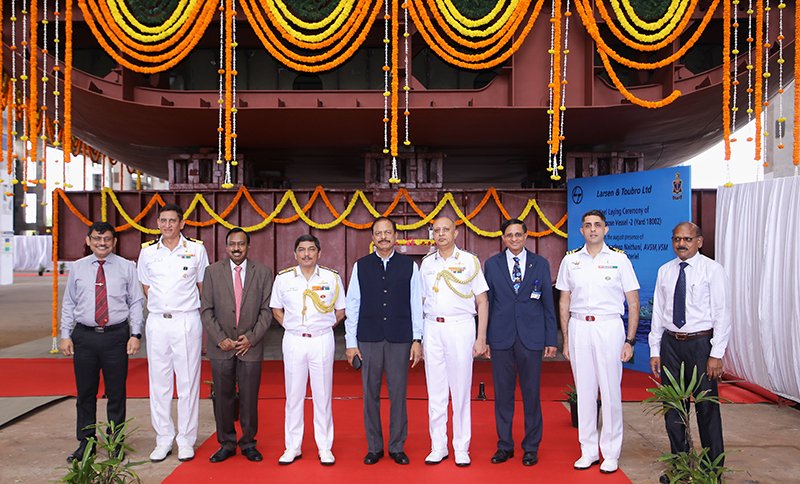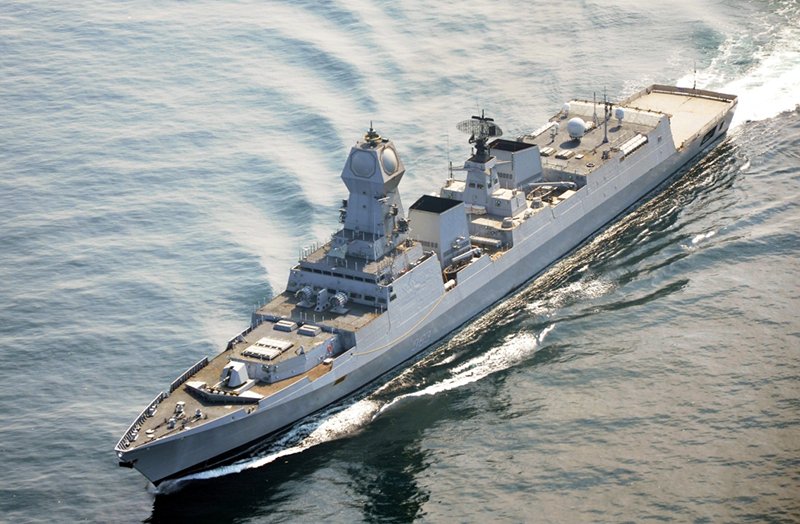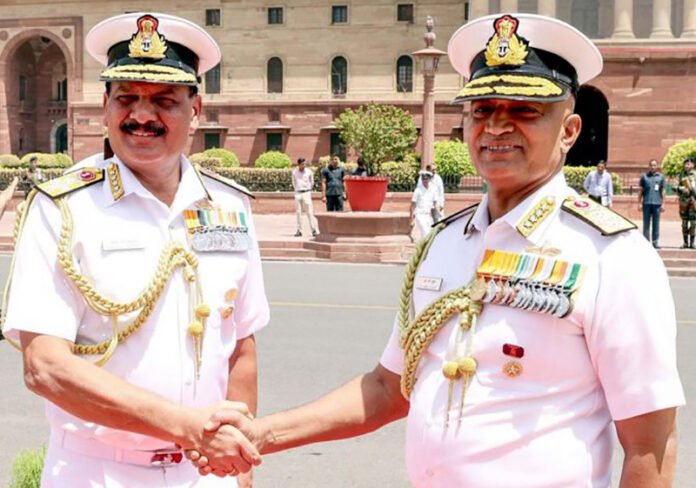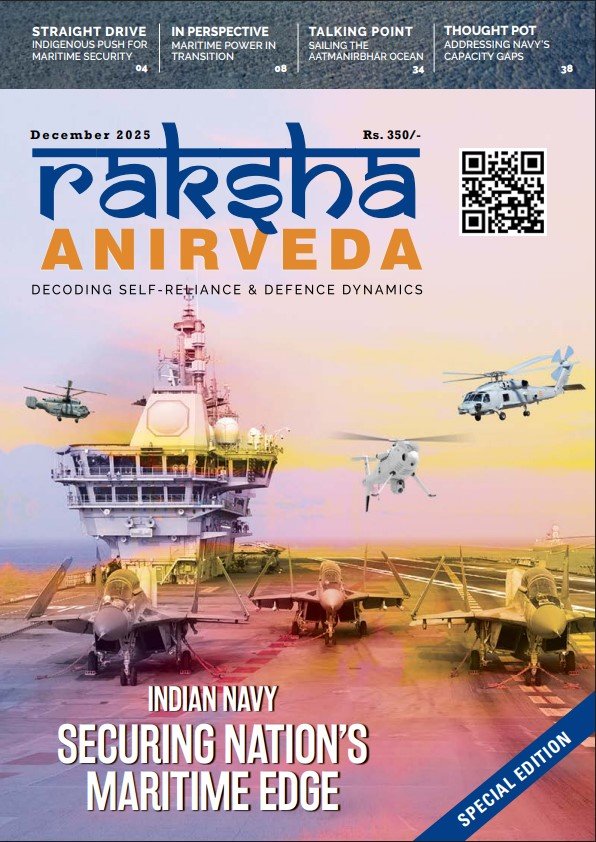India will mark its Navy Day on 4th December 2024 in the coastal town of Puri, Odisha, an event that not only commemorates the Navy’s historic contributions to national security but also underscores the country’s growing maritime capabilities. India’s Navy Day is traditionally celebrated on 4th December each year to honour the daring naval attack during the 1971 Indo-Pakistani War when India’s Navy struck decisively at Pakistan’s naval forces. This date serves as a reminder of Operation Trident, which saw three OSA-class missile boats under the command of Commander BB Yadav MVC, and Captain Gopal Rao MVC, sink three Pakistan Navy ships off Karachi on the night of 4th December 1971. The overall command of the operation lay with Captain Gopal Rao, while Commander Yadav was Officer in Tactical Command (OTC) on INS Kiltan. The attack employed P-15 missiles that crippled the Pakistan Navy’s capacity to wage war at sea.
In parallel, on the morning of 5th December 1971, four IAF Hunter aircraft from Jamnagar, equipped with long-range drop tanks, set fire to the Kemari oil storage tanks in Karachi. These actions, although separate, dealt a significant blow to Pakistan’s naval and oil infrastructure on the very first day of the war, which India fought to liberate Bangladesh from Pakistan’s brutal military rule. The dual strikes, from both sea and air, were critical to the success of India’s military campaign in the region.
Prime Minister Lee Kuan Yew of Singapore, in a lecture at Thailand’s Military Staff College in 1972, praised India’s remarkable victory and stated, “The 1971 war has bolstered the nation’s morale under Mrs. Indira Gandhi.” His recognition of India’s strength predicted the rise of India as a strategic power in the coming decades. As part of his vision, he sought closer ties between India and Singapore, initially focusing on economic relations and later extending to defence and security cooperation.
Navy Day is observed on 4th December to remember the successful Operation Trident, when the Indian Navy struck Pakistan’s fleet off Karachi in 1971. This pivotal action marked India’s decisive naval victory in the war, making Navy Day a moment of pride and reflection for India’s maritime forces
This vision has come to fruition, as Singapore is now one of India’s closest strategic partners, with both nations having signed a Joint Military Training Agreement. A significant marker of this cooperation was the recently concluded 31st edition of the Singapore-India Maritime Bilateral Exercise (SIMBEX), which took place from 23rd to 29th October 2024. Both the Republic of Singapore Navy’s (RSN) RSS Tenacious and the Indian Navy’s INS Shivalik of the Eastern Fleet, along with the Long-Range Maritime Patrol Aircraft P-8I, participated in the joint exercise. This showcases the growing strategic and tactical alignment between the two naval forces. Additionally, Singapore’s support for Indian naval operations includes allowing Indian warships to undergo Operational Turnaround (OTR) without the usual complex diplomatic protocols, facilitating enhanced operational efficiency.

Navy Day Celebrations in Puri: Honouring Maritime Heritage and the Navy’s Growing Role
This year, the Ministry of Defence (MOD) has chosen the coastal town of Puri in Odisha as the venue for Navy Day celebrations, a choice that carries rich historical and cultural significance. Puri is home to the Jagannath Temple, one of India’s most revered religious sites, and holds a deep connection to India’s maritime legacy. The town is a gateway to the Indian Ocean, with the nearby Chilka Lake—India’s largest brackish water lake—serving as the home to INS Chilka, the Navy’s primary training establishment, located just 44 km from Puri. Chilka Lake is not only a key asset for the Navy’s training activities but is also an important tourist destination.
Puri has historical significance beyond its religious importance. It is linked to the ancient Bali Yatra (Voyage), which dates back to the 3rd century BCE when King Bali of the Mauryan Empire encouraged maritime expeditions and trade with islands to the East, which are now part of modern-day Indonesia. Moreover, Puri’s strategic significance is further highlighted by its historical connection to maritime exploration. In 1497, the Portuguese King commissioned explorer Vasco da Gama to chart a maritime route to the East, and it was his landing in Calicut in 1498 that set in motion the Portuguese expansion into India. The legacy of seafaring and maritime exploration is deeply embedded in the region’s history.
India’s naval forces have long honoured Lord Varuna, the Hindu god of the sea, whose grace is sought for the safety of sailors. The Navy’s motto, “Shan Na Varuna,” or “May Lord Varuna be gracious to India’s Navy,” reflects the country’s deep-rooted maritime traditions.
The Indian Navy continues to ramp up its indigenous shipbuilding efforts with several new vessels under construction. This includes the upcoming delivery of the INS Vagsheer submarine and new-generation offshore patrol vessels, as well as the commissioning of large survey ships, showcasing India’s growing self-reliance in naval defence
Prime Minister Narendra Modi’s policy to celebrate Armed Forces Days outside the national capital has played a crucial role in fostering greater public awareness of the country’s military capabilities. By celebrating Navy Day in Puri, the MOD is not only shining a spotlight on the Navy’s contribution to national security but also strengthening the country’s maritime outreach, especially to coastal regions far from the capital. The Indo-Pacific region, where India is a key player, is increasingly critical to global geopolitics. With China’s growing influence in the South China Sea and its close military ties with Pakistan—India’s neighbour and long-standing regional rival—the Navy’s role in securing India’s maritime borders and protecting vital sea lanes has never been more significant.
In the coming years, China’s increasing presence in the Indian Ocean and its plans to supply four submarines and four warships to Pakistan will present challenges to India’s naval dominance. Moreover, the resurgence of ties between Pakistan and Bangladesh, exemplified by the recent arrival of a Pakistani cargo ship in Bangladesh, further complicates the region’s security dynamics. The shifting geopolitical landscape in the Bay of Bengal and the Indian Ocean calls for India’s Navy to maintain readiness and enhance its operational capabilities.
Indian Navy’s Bold Expansion Plans
The Indian Navy’s ambitious expansion and modernisation plans reflect a commitment to ensuring national security while meeting the demands of an increasingly complex maritime environment. On 3rd February 2024, the Navy commissioned its first large survey ship, INS Sandhayak, which was innovatively designed and built by Garden Reach Shipbuilders and Engineers Ltd (GRSE) in Kolkata, in collaboration with Larsen & Toubro Ltd (L&T). The Navy has several more ships under construction, including the survey vessels Nirdeshak and Ikshak. The Chief of Naval Staff, Admiral Dinesh K. Tripathi, is expected to provide further details on the Navy’s future expansion plans during Navy Week. The Navy has also announced the imminent commissioning of the Vagsheer, the last of six Scorpene submarines, as well as the 6,800-ton Surat, the final of four Type 15B destroyers. These developments will significantly enhance the Navy’s strategic capabilities in the coming years.

In line with the “Aatmanirbhar Bharat” (Self-Reliant India) initiative, the Indian Navy has led the way in indigenous shipbuilding and design. The construction of advanced warships, including the Type 17A frigates and Krivak-class destroyers, has been progressing at Indian shipyards like Mazagon Docks and Goa Shipyard Ltd (GSL). The Navy has also partnered with Larsen & Toubro (L&T) to build large training ships in Chennai. The Navy’s focus on self-reliance has ensured that India is gradually moving away from dependence on foreign suppliers, allowing it to better control its maritime security architecture.
The Indian Navy has also expanded its shipbuilding capabilities by laying the keel for five large Fleet Support Ships (FSS) at Hindustan Shipyard Limited (HSL) in Visakhapatnam in November 2024. These vessels will play a crucial role in supporting operations across India’s vast maritime expanse. Similarly, the construction of 11 Next Generation Offshore Patrol Vessels (NGOPV) began in November 2024, with the keel-laying ceremony for the first two ships taking place at GRSE in Kolkata. These ships, with a displacement of 3,000 tons each, are expected to enhance the Navy’s capabilities in patrolling India’s maritime borders and securing vital shipping lanes.
Chosen for its cultural and strategic significance, Puri will host Navy Day celebrations in 2024. Home to the renowned Jagannath Temple and near to the Navy’s training base at Chilka Lake, Puri is becoming a focal point for India’s maritime outreach. The move also highlights the government’s push to decentralise military celebrations and bring them closer to the public
International Collaboration and Technological Advancements
The Indian Navy continues to foster international defence cooperation, as evidenced by the signing of a Memorandum of Implementation (MoI) with Japan on 15th November 2024 for the co-development of composite UNICORN masts for future warships. This collaboration between Bharat Electronics Limited (BEL) and Japan will ensure that Indian warships are equipped with state-of-the-art radar, communication, and electronic warfare systems, all while maintaining a low top weight and stability for the ships.
In addition, India has made strides in ensuring the effective transport of naval armaments through the construction of Missile Cum Ammunition Barges (LSAM), with the fifth barge, LSAM 13, delivered in September 2024. These barges will be critical in ensuring the timely delivery of munitions to operational naval units.

The Indian Navy’s Journey
In the fifty-three years since India’s triumphant victory in 1971, the Indian Navy has undergone substantial growth and transformation. From a fleet of 138 ships in 1971, the Navy now boasts a strength of 146 ships, with a focus on high-tech, modern warships. However, the Navy’s true strength lies in the quality of its vessels, weapons, and electronics, which are world-class, thanks to a rigorous selection and testing process. Over the last decade, naval infrastructure, both ashore and at sea, has vastly improved, ensuring that India’s naval forces remain operationally agile and ready for any eventuality.
As China strengthens its naval presence in the South China Sea and forms deeper ties with Pakistan, India faces new security challenges in the Indian Ocean region. The Navy’s role in safeguarding the nation’s maritime borders and supporting regional security initiatives like the SAGAR strategy is becoming more crucial than ever
India’s ambitions for a blue-water navy have been reinforced with its increasing presence in the Indian Ocean, with a focus on regional security initiatives like India’s ‘Security and Growth for All in the Region’ (SAGAR), which aims to provide security and maritime stability to neighbouring countries like Mauritius, Seychelles, and the Maldives. By offering these nations technical assistance, small naval vessels, and logistical support, India has reinforced its role as a key player in regional peace and prosperity.
India’s naval capabilities are reflection of its strategic foresight, technological innovation, and commitment to securing its interests in the Indian Ocean region. The Navy’s commitment to indigenous shipbuilding, training, and modernisation is a clear indication of India’s determination to meet the challenges of the 21st century, while protecting its interests in the dynamic and increasingly contested Indo-Pacific region. As the Navy moves forward with its expansion plans, it will remain a cornerstone of India’s national security, a symbol of the nation’s growing maritime prowess, and an instrument of regional stability.
The writer is a naval author and curates a Maritime Museum at C 443 Defence Colony, New Delhi and writes and lectures on maritime issues.






